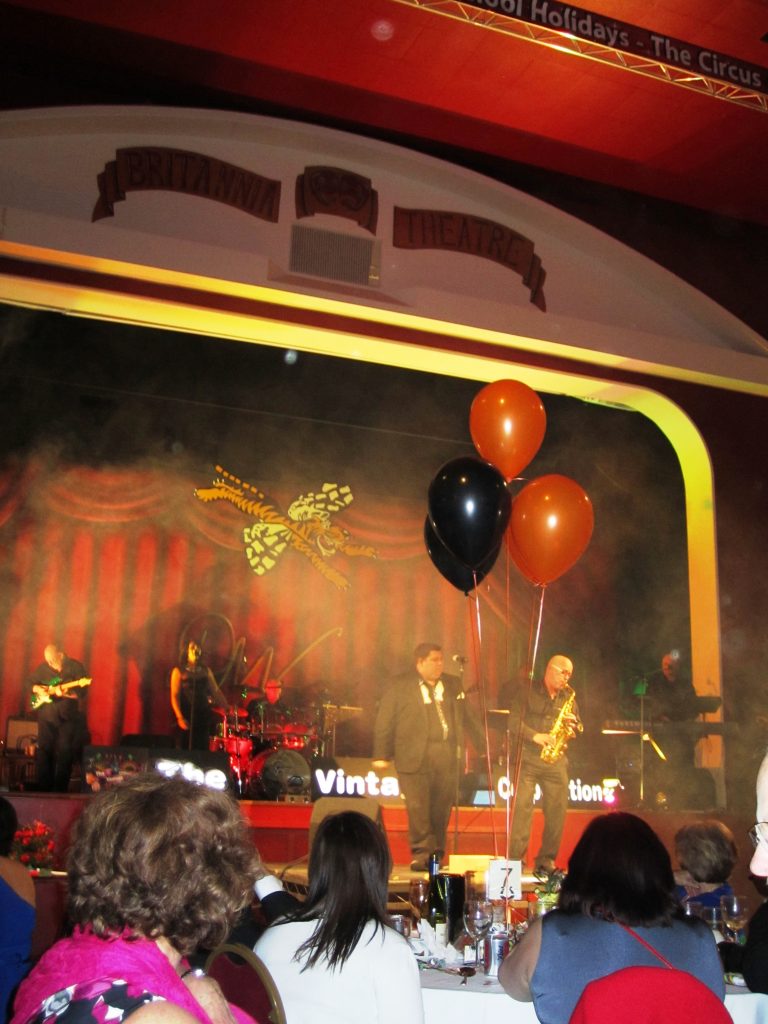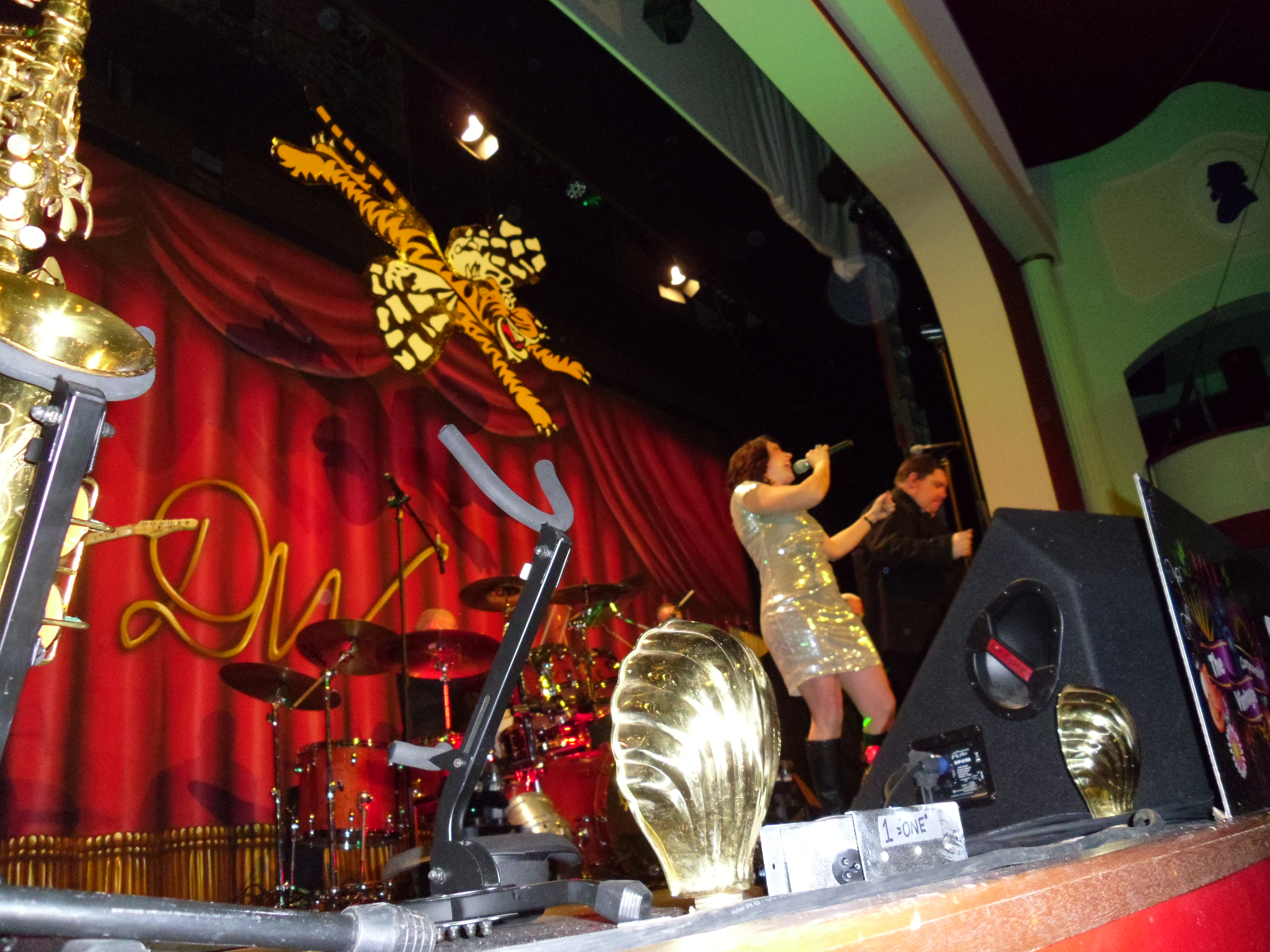The Tiger Club celebrates 21 years of Sport Aviation at Headcorn Aerodrome and shows how other clubs can keep membership and morale high, even in tough times. Learn how to fly at the Tiger Club.
NO doubt some flying clubs around the country are asking the question, “What do we have to do to keep our members?”
It’s clear that PPLs are flying less, visiting airfields less and spending less too. But not everything can be blamed on the recession, and there has to be other reasons why people are giving up flying. Offering a small observation from my travels, some clubs don’t create an atmosphere that people want to be part of. Just having aircraft available to fly is simply no longer enough.
No club understands this better than the Tiger Club in Kent, which has just held its annual ball (how many clubs still do one of those?). This year’s took place at Dickens World near Chatham Dockyard, marking 21 years since the club moved to Headcorn Aerodrome and 55 years since its creation at a Royal Aero Club meet by Norman Jones at Croydon Airport.
More than just being a ball, the Tiger Club chose to call theirs a celebration of Sport Aviation, a term that seems to gain more relevance as time goes by. While GA describes the industry as a whole the actual thrust of what most PPLs now can be classed as Sport Aviation – people using their aircraft for leisure and pleasure. Sport Aviation covers everything from going for a bimble, flying aerobatics or learning to fly a new type – and all those other aspects of flying which are exciting and sporty. It’s these things that the Tiger Club has in leaps and bounds and its specialty is offering instruction and mentoring in flying all kinds of beautiful (and sexy) aircraft including the famous 1933-built Tiger Moth G-ACDC, the CAP10 used for aerobatic instruction and the much-loved single-seater Rollason Turbulents.

You can’t beat a sunny day at the Tiger Club – that’s their portacabin clubhouse on the left
Glyn Richards, the Tiger Club’s manager kindly invited me along to this year’s Tiger Ball to show me first hand why the club continues to thrive. Encouraged by Max Couch, Headcorn’s resident chief examiner and entertainment guru, the pair decided to choose a special venue completely off the map from Headcorn and picked Dickens World, a Dickensian-themed version of a theme park attraction, which is run by a former Warner Bros producer.
Inside, guests were greeted by a live performance of Oliver Twist in a Dickensian setting, while they drank champagne. I found it all a bit bizarre, as did others, but it set up the night’s entertainment perfectly. Max Couch’s other hat as an entertainer/musician/actor shone through as he rallied everyone together on the microphone and led us through to the main dining room.
Meanwhile, former wingwalker Helen Tempest – whose father Barry had been an original instigator within the Tiger Club many years ago – whispered in my ear, “If you’ve never been to a Tiger Ball before then you’re in for a shock. It’s usually carnage.”
carnage.”
And she was right. We made our way into the splendor of the Britannia Theatre where hanging from the ceiling over the stage was a huge Tiger Club logo making the room feel like a movie set. On the tables were hundreds of orange and black helium balloons pointing up to the sky – tiger stripes. Grrr! Immense effort had gone into making the place look incredible.
“Wow, this is something else,” I say to Samantha Williams, my host for the evening. Samantha has moved to the area just so that she can be close to the airfield. She is currently waiting to fly her solo XC and has involved herself in boosting the PR for the Tiger Club and its Turbulent Display Team, which this year will be displaying at airshows in both the UK and France as it has done since its inception in 1959.
No sooner have we sat down and the table next to us fires off huge confetti cannon. Moments later I feel something hit me on my back. And then on my head. It’s a polystyrene ball that’s just been blowpiped at me by Sam Whatmough, the director of the Air Ministry, which runs formation training schools each spring and autumn. He’s grinning like a naughty schoolboy. It turns out that every table has been armed with them and I pour the balls into my coffee cup for easy access and to return fire. Haha!
There must be over 200 people here and each one has coughed up the £45 ticket price to be part of it. “We even have people joining the club, not to fly, but just to be part of the social side of things,” explains Samantha. She then goes on to tell me how the reputation of the club has made it to America where pilots there have emailed Glyn asking how they can become members.
Maybe this reputation comes from the people that fly here; stars like Brendan O’Brien, Anna Walker or Diana Britten, who was present on the evening. When I ask Diana what the Tiger Club means to her, she says beaming, “It’s the camaraderie of it all. It’s the inspiration and having people around you to encourage you to get up flying. If you’re lacking direction in your flying then the Tiger Club is the best possible place to be.”
It then dawns on me that maybe the Oliver Twist play wasn’t so bizarre after all. Sometimes all of us feel lost in the world, no more so with our flying and just as Oliver travels to London to find direction in his life, you can do the same here at the Tiger Club. I’m not sure who the club’s Artful Dodger is…but I’m sure it has one.
Famous members it may have, but it’s every individual member that counts. And before anyone suggests that the Tiger Club must have the shiniest, cleanest and most expensive facilities then you’d be wrong. Helen Tempest summed it up the best, “You’d think the Tiger Club would be on hallowed ground,” she says. “Then you get to Headcorn and see that it’s just a portacabin.”
Portacabin it may be, but clubs all over the country use exactly the same kind of base for their operations. Facilities at a club are very important though – and a run-down or untidy crewroom is a sure fire way of losing members. But in the same breath, a room full of leather sofas, flatscreen TVs is nothing if it is empty and unused. The club, however, has recently secured a second portacabin allowing for expansion and refurbishment of the clubhouse. And Headcorn’s owner Jamie Freeman has a new 19,740 sq.ft hangar currently under construction. With room for over 30 aeroplanes it’s already attracting aircraft owners from around the UK on the waiting list for new hangar space. Already there are rumours of a “themed summer hanger party” being put on by Jamie Freeman, proof that the Tiger Club and Headcorn Aerodrome members need little excuse for a party.
Even with modest facilities, any club can turn round its fortune providing it has the characters there making it a nice place to visit and hang out. Having hot water on tap for tea and coffee is a start and in the Tiger Club’s portacabin a sign hangs around the tap of the hot water urn saying, “Drink Coffee, Do Stupid Things Faster With More Energy”. A sense of humour at a club helps too it seems.
I talk through these ideas with Max Couch during dinner and tell him that clubs need to understand that when people go flying they’re paying good money and want to enjoy themselves. He replied saying, “Oh I think you’re right. You see when people choose to be a private pilot they’re buying into leisure. In the USA flying is cheap, it’s available and everything there is so much more geared to leisure aviation. It’s all about customer service and looking after people. Thankfully, that’s what people buy into here at the Tiger Club.”
Having been in the flying game for years as an instructor and examiner, Max truly understands that in order for clubs to survive they need to entertain people and understand that it’s their leisure time.
“The enemy in the UK is of course the weather,” he says. “Even on a good day the weather can be off simply because we’re in Britain. It’s good when it’s good but people should remember that traditionally, this country doesn’t have the best flying weather.”
I sense that Max is referring to people who choose to learn to fly in the USA where the weather is more conducive to training. Samantha, sat to my other side knows this only too well as she has been waiting months and months to do her cross-country qualifier. Frustration with the weather is clearly another reason why people give up flying but in Samantha’s case it will take more than the bad weather to stop her PPL ambitions. She said, “Although the recent spat of bad weather has postponed my cross country qualifier, I am grateful for the experience of the extremes of a British winter. I have flown nav exes with snow on the ground, completed a night flight in light rain and have flown more crosswind landings than I care to remember! Hopefully it’ll make me a better pilot.”
Without the enthusiasm of other members and offers to ‘jump in the spare seat’ she claims she wouldn’t still be flying. And that is what makes flying at the Tiger Club so special. She adds, “It is not the kind of club where you simply turn up, fly and go home. There is a social scene and a whole network available to new pilots with countless years of experience to draw upon.”
Another female pilot caught by the charms of the club is Julie Garside who now leads up the Turbulent Display Team and flies a nostalgic barnstorming routine. “Glyn is the one who got me into display flying,” she says. “Yep he’s the one who turned me into an aerial hooligan. I just love flying the Turbs and every time I come back from a flight smiling.”
Many of the other members agree with Julie that it’s the encouragement to learn how to ‘fly like a Sky God’ which keeps them coming back. Several members travel all the way down from Scotland just to fly here, such is the skill base on offer. Julie adds, “Right now I’d say that the club is back at its roots. It just has this extraordinary atmosphere”.

Tiger Club members regularly fly in formation with each other – just one of the advanced set of skills they learn
While we’ve been chatting away, the rest of the room has been tying polystyrene aeroplanes to the bottom of the helium balloons and letting them float up to the roof of the theatre. By the end of the night the ceiling looks like a dogfight. From the balcony someone is flying a radio-controlled Piper Cub over the heads of everyone. He crashes it into some balloons coming out of a loop and the room erupts into laughter and applause.
After the dinner and before the band starts, Glyn presents some club awards including a trophy that goes to Samantha Williams for a ‘Significant Contribution From A New Member’.
“Ooh, it’s got my name on it and among all these amazing pilots, what an honour!” she says looking more closely at it when she returns to the table. Recognition of success is another way a club can make its members feel valued.

Sam Williams (left) and Helen Tempest. The author, Dan Tye lurks in the background with Justyn Gorman.
For me it was Glyn’s speech at the end of the night that really captured the essence of what it means to be part of a flying club though. Later on he admitted to me that he hadn’t prepared any special words in advance, but his speech went a little like this,
“Thankfully we’ve had a lot of people this year saying ‘how can WE help the Tiger Club?’ instead of them asking ‘what can the Tiger Club do for me?’ We’ve definitely seen an upturn and the morale is certainly improving. Once again, thank you everyone who has turned up and supported us throughout the year. Thank you very much.”
If we take anything away from the Tiger Club, it’s clear that the success of a school or club depends not on the facilities, the aircraft or the cost of the flying, but on the give and take from its members. We’re at an exciting time in Sport Aviation; let’s capture this excitement and make flying fun again.
Photos courtesy of Richard Foord, Sam Williams and Julie Garside. A thank you to Glyn Richards and the Tiger Club members for inviting me and making it such a memorable evening.


COMMENTS